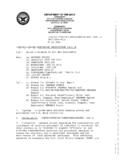Transcription of Federal Income Taxation of Securitization …
1 Federal Income Taxation of Securitization transactions and Related Topics Fourth Edition James M. Peaslee David Z. Nirenberg Published by Frank J. Fabozzi Associates 1 Chapter 1 Tax Issues in Securitization transactions The main subject of this book is the Federal Income Taxation of Securitization transactions . The book also covers a number of related topics with applications outside of the Securitization field. The discussion is current through the end of November This chapter describes a typical Securitization transaction. It also outlines the topics covered in succeeding chapters and in that way identifies the most important tax issues that arise in securitizations.
2 A Securitization provides a means of financing through the securities markets a pool of real estate mortgages or other consumer or commercial payment obligations (receivables). In a typical transaction, an owner of a pool of receivables (sponsor) conveys them, directly or through an intermediary, to a trust or other legal entity (issuer), which issues securities 1 The discussion is, of course, subject to change through subsequent legislation, administrative actions, or judicial decisions.
3 The authors intend to provide periodic updates, as warranted by developments, through the book s website at Except where otherwise noted, section citations in this book are to the Internal Revenue Code of 1986 (Code). There are citations throughout the book to private letter rulings, technical advice memoranda, general counsel memoranda, field service advices, chief counsel advice memoranda, and other informal Internal Revenue Service (IRS or Service) guidance. While these sources are not binding on the Service and may not be used or cited as precedent (see section 6110(k)(3)), they are nonetheless helpful in determining the views of the Service.
4 The book describes financial accounting rules under GAAP in a number of contexts where they provide a useful contrast with tax rules or have influenced the development of Securitization structures. The discussion, however, does not provide a complete or authoritative description of accounting rules and should not be relied upon as guidance on GAAP principles. 2 Chapter 1 backed by those assets. The securities are then sold to investors, with the sponsor receiving the proceeds. The securities supported by the receivables (whether they be mortgages or other obligations) will be referred to as asset-backed Typically, pools of mortgages and other long-dated receivables held by an issuer are fixed or substantially fixed.
5 For obvious practical reasons, that model works less well for short-term receivables, such as credit card balances. Issuers receiving payments on short-term receivables may prefer to reinvest them in new receivables over some period, producing a revolving asset pool. In a fixed-pool Securitization , the issuer acts largely as a cash funnel, collecting and combining payments on the pooled assets and directing them to different investor groups. An issuer holding a revolving pool takes on the added role of reinvesting payments before they are distributed to investors. While the issuer s role as an intermediary between receivables debtors and securities holders is economically useful, a Securitization transaction almost certainly would not be viable if passing cash through the issuer resulted in significant additional tax burdens.
6 One of the main goals of tax planning in this area indeed the sine qua non is to ensure that no material incremental issuer tax costs are incurred. This book discusses in depth the tax treatment of the issuer, investors, and sponsors in a Securitization . As noted above, it also covers a number of related topics not directly related to securitizations. A chapter-by-chapter summary follows. Chapter 2 (types of securities). Chapter 2 describes the principal types of asset-backed securities and the ways in which the issuer-level tax problem has been addressed for each. In brief, such a tax may be avoided by using an issuer that is considered transparent for tax purposes and allocating its Income to holders of ownership interests in the entity, by paying out Income in the form of deductible interest on debt, or by moving the issuer offshore.
7 An important goal in many Securitization transactions in addition to avoiding tax burdens is to divorce the securitized assets from the sponsor for financial accounting and non-tax legal purposes. As Chapter 2 shows, the development of Securitization structures has often reflected compromises between potentially conflicting tax and non-tax goals. 2 This term is sometimes used to refer only to securities backed by non-mortgage assets. Mortgages are, however, indisputably assets, and the term as used in this book encompasses mortgage-backed securities.
8 Tax Issues in Securitization transactions 3 As detailed in Chapter 2, the major categories of securities are: pass-through certificates issued by grantor trusts (including stripped certificates representing non-pro rata rights to principal and interest, senior/subordinated certificates, callable certificates, and LEGO certificates that can be separated or combined) pay-through bonds (debt instruments that receive cash based on principal and interest collections on underlying assets) issued by domestic issuers equity interests in issuers of pay-through bonds interests in a real estate mortgage investment conduit (REMIC)
9 Pass-through debt certificates (our term for instruments taking the form of trust equity that are intended to be classified as debt under general tax principles) interests in a financial asset Securitization investment trust (FA S I T) interests in foreign corporations (which may be debt or stock) asset-backed debt other then pay-through bonds (such as net interest margin securities (NIMS), asset-backed commercial paper, covered bonds, and debt issued in stranded cost securitizations), and synthetic variable rate tax-exempt bonds. Pass-through certificates issued by grantor trusts are the most traditional and in some ways simplest type of asset-backed security.
10 The certificates are beneficial interests in a fixed pool of receivables. The receivables are often mortgages but need not be. The certificates generally may not have sequential-pay features. Pay-through bonds have traditionally been backed by fixed pools of receivables but may also be used to securitize revolving pools. They were the first type of sequential-pay asset-backed security. A REMIC is a pool of mortgage receivables and related assets that elects to be subject to a set of tax rules specially tailored for a multiple-class Securitization of a fixed pool of real property mortgages.






